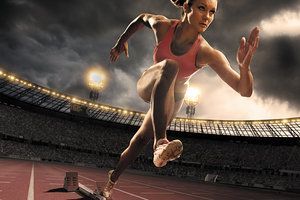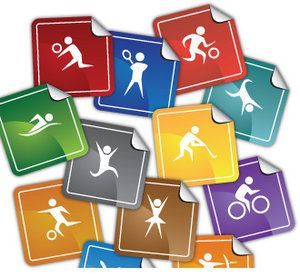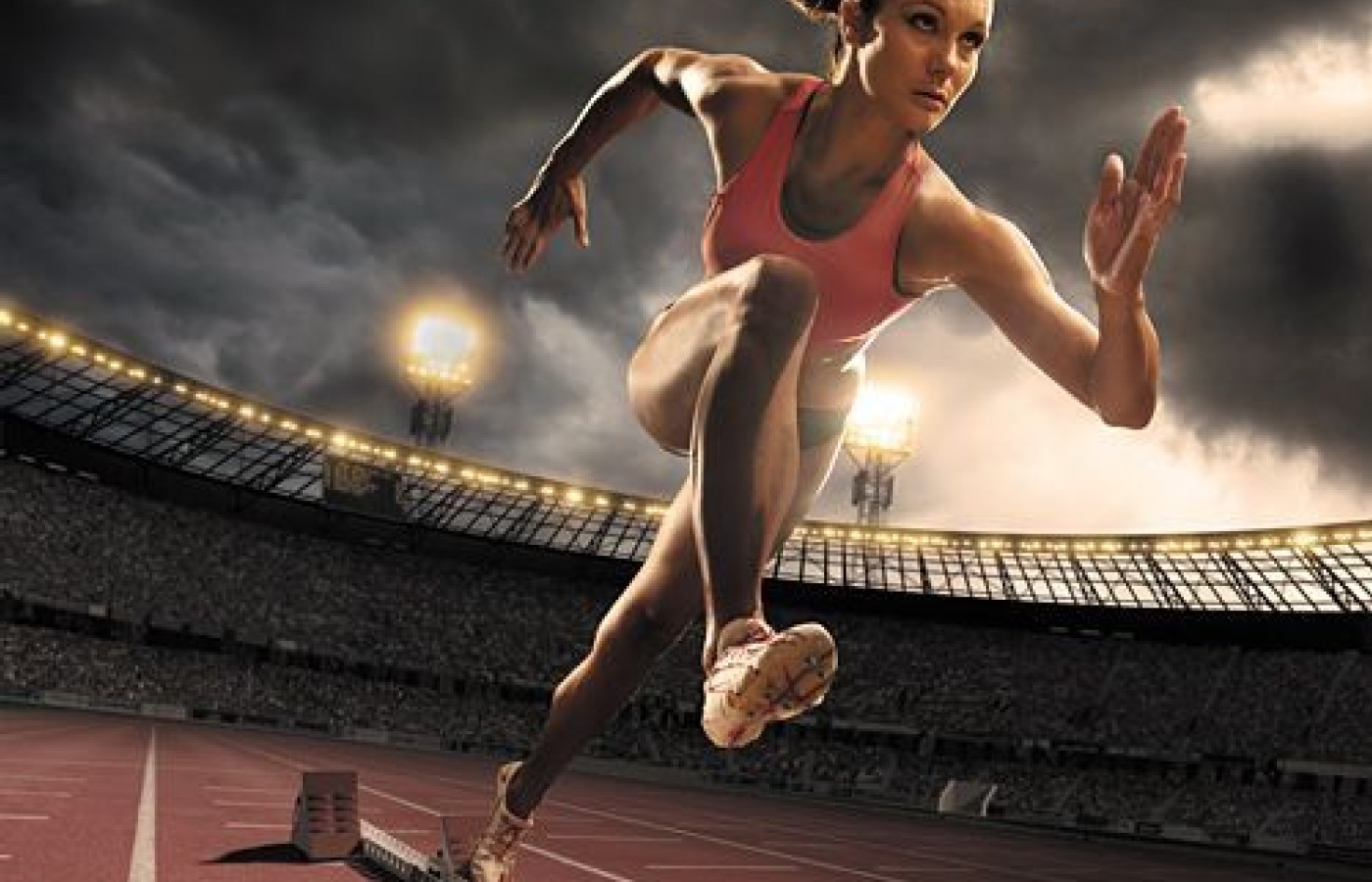Some doctors thrive in a personality-based clinic and have a loyal following no matter what services or equipment they offer, but for most chiropractic offices who are trying to grow and expand, new equipment purchases help us stay relevant and continue to service our client base in the best, most up-to-date manner possible. So, regarding equipment purchasing: should you lease, get a bank loan, or pay cash?
The Sporting Life: Specializing in Sports Injuries
So you want to specialize in sports injuries? That decision alone is a giant first step in leading the kind of life you want inside and outside the office. Narrowing your focus is critical for business and personal success. Time, energy, education, money, marketing and networking are enhanced when you have a direction that resonates with your purpose. Or, perhaps you are at a clinical crossroads and considering specialization in sports injuries. Either way, this article is for you. How do you know if the sporting life is for you? What practical considerations must you evaluate to see if this is the right path? Being athletic and loving sports might not be enough to get you across the goal line of practice success. Let's take a look at some essential components of being a sport injury specialist and how they apply to your practice.

Long term clinical care of sporting injuries involves more than removing spinal subluxations. Restoring spinal mobility is, of course, foundational to athletic movement and performance however, soft tissue therapy and movement based corrective exercise are critical players, too. Becoming a true "game changer" in the world of sports is the epitome of the "above, down, inside out" approach to patient care. People who participate in sports from the professional to weekend warrior have a different mindset when it comes to following a therapy program; they want to get better and will do whatever it takes to do what they love better.
Patient Demographics
Specializing in sports injures takes you to a unique subculture of competition. Competition is innate. It's deeply ingrained in the human psyche. From the times of the Roman Gladiator, organized Olympic Games and the current Crossfit phenomena, people compete against themselves for a personal best or against another individual. It inspires us to push ourselves, to do more, to be more, striving for self improvement. These are powerful motivators in patient care and retention. People invest in things they value. The sense of community and support in sports is a powerful catalyst for change. When someone is hurting and you make them feel better, they will tell others. If someone wants to improve their performance and you help them do that, they will tell others. From the standpoint of practice management and marketing, specializing in sports injuries is at the top of the list.
Marketing Basics
Walk the talk! Be your sport. Participate in and do the sports you love. There is this wonderful strategy of marketing known as people skills. Connecting with and relating to people is the foundational key to long term success in business. Find out where the athletes of your sport congregate. Where do they go to do their sport? Where do they go to compete? What are their goals? What makes them tick? Become an "injury specific" marketer. What does that mean? Market to injuries specific in your chosen sport. For example, runner's get knee pain and plantar fascitiis, tennis players get elbow and shoulder pain, soccer players get knee, hip and ankle issues. Narrow your bullseye marketing target. The ripple effect is much larger when you hit the target. Focus on social media outlets to find your market. Facebook, Twitter and Meetup are essential in developing your plan of action. Even if you are not on social media, I can promise you that your target market is and if they don't see you, you lose.
Learn Movement Assessment
Movement never lies! It tells the unique story of each individual human beings history, compensations and adaptations. No two people move the same. So how can you treat people the same for an injury? You can't. Dysfunctional movement patterns may manifest in poor performance, increased injury, decreased durability and pain. Bodily injury causes movement adaptation to avoid pain. The body craves safety and stability above all else and will use any means necessary to obtain it. Assessing how an athlete moves can be a powerful predictor of injury. Previous injury and movement asymmetry (you function better on one side than the other) play a critical factor in whether an athlete will become injured again. Just because pain goes away, does not mean functional movement patterns have been restored. Physical therapist Gray Cook uses the Functional Movement Screen (FMS) scoring system to evaluate movement efficiency using seven fundamental patterns. The measured level of score can be used as a predictor of future injury. The FMS is used by professional athletic teams and health and fitness professionals as a measurable system of movement ability. Here are examples of some movements and what they might tell you:
Overhead squat: A full body evaluation of stability and mobility of the body. Can the client control movement and gravity load? Do the joints allow enough movement to hinge at the ankles, knees, hips, thoracic spine and shoulders. A quick and easy assessment of full body movement. The worse the squat, the worse the mobility and stability. It's a benchmark of where to begin in therapy.
Single Leg Stance: Demonstrates unilateral stability and functioning of the LSS (Lateral Subsystem). Increasing demands of stabilization shows underlying compensations of the body. What do the feet do? Supinate or pronate? Does the hip drop? How is balance? Does the athlete hold their breath? Does the neck and shoulder compensate. Single leg stance is critical because that is how most athletes spend their time...on one leg...running!
[pb]Kinetic Chain Above and Below
Injury is never in isolation. When treating an injury you should evaluate the joint above and below. For example, a knee injury should include an assessment of the ankle and hip. Specializing in sports injuries mandates an appreciation for the kinetic chain relationship of the body. Mike Boyle and Gray Cook created the Joint by Joint theory of movement assessment. Basic premise is the body is a mechanism of alternating joints of mobility and stability. If these relationships are altered the body will compensate in an attempt to correct the dysfunction. Let's take the previous knee example. According to the Joint by Joint Theory, the knee should be more stable than mobile. The knee and hip should be more mobile than the knee. If there is a loss in mobility of the ankle or hip the knee often compensates with excessive mobility, thus becoming more susceptible to injury. Understanding how the body moves is critical for treating athletic injuries.

Corrective Exercise
Quality of movement trumps quantity every time. Restoring the safety of fundamental movement is pivotal to long term performance. Regress the athlete back with corrective exercise therapy to progress them forward in athletic ability. Obtaining a Diplomate degree in Chiropractic Sports Medicine or Rehabilitation can add to your arsenal of tools to help athletes. Sports specific corrective exercise is a hot topic now and this opens the avenue of you working with other professional networks in the world of fitness; athletic trainers, personal trainers, corrective exercise specialists, etc. Dynamic kinetic chain movement based protocols should be introduced as soon as possible in the therapy program of athletes. They must feel confident and comfortable with movement again. Dysfunctional neural patterns may remain long after an injury recovery and the fear of movement can negatively impact an athletes training.
Soft Tissue Matrix
Sports therapy must involve soft tissue therapy. Fascial restrictions impact mobility and stability. Soft tissue extensibility dysfunction (tightness) limits joint range of motion. Athletes lose joint centration and neural input for movement patterning is altered. Excessive wear and tear begin on the muscles, tendons, and joints. There are many techniques to choose from depending on what resonates with your methodology and practice paradigm. Some examples include: Graston, Active Release Technique, Trigger Point Therapy, Dry Needling, etc. Deep tissue laser therapy has proven to be an exceptional tool for accelerated healing tissue repair of sports injuries. Athletes want to get back in the game ASAP and laser phototherapy treatments do just that. Many professional athletic teams across the world use laser therapy and other soft tissue treatment approaches to heal from and prevent injuries.
Make a game plan strategy for your career. Map out your focus by following these simple steps.
- Determine your ideal athlete or sport
- Choose specific injuries to master
- Market to those people
- Learn movement evaluation skills
- Specialize more with your education
- Develop corrective exercise programs for athletes
- Train in soft tissue therapies
- Network with other fitness and sports professionals
Specializing in sports injuries can be extremely rewarding. Embracing a passion for helping others,improving performance and elevating the game to new heights are just a few of the benefits. Now get in the game and show them how it's done.
Resources:
- Cook, Gray. Movement: Functional Movement Systems : Screening, Assessment, and Corrective Strategies. Aptos, CA: On Target Publications, 2010. Print.
- "Dan John, Lifting and Throws Coach." Dan John. N.p., n.d. Web. 30 Apr. 2013.
- Elphinston, Joanne. Stability, Sport, and Performance Movement: Great Technique without Injury. Chichester, England: Lotus Pub., 2008. Print.
- Myers, Thomas W. Anatomy Trains: Myofascial Meridians for Manual and Movement Therapists. Edinburgh: Churchill Livingstone, 2001. Print.
- Todd, Mabel E. The Thinking Body. New York: Dance Horizons, 1975. Print.
- Weinstock, David. NeuroKinetic Therapy: An Innovative Approach to Manual Muscle Testing. Berkeley, CA: North Atlantic, 2010. Print.



